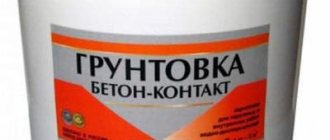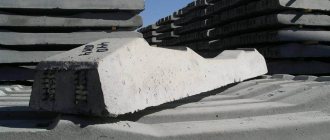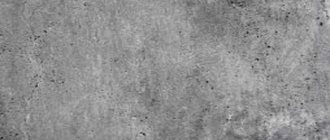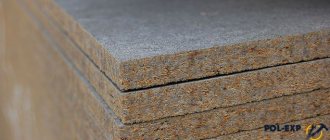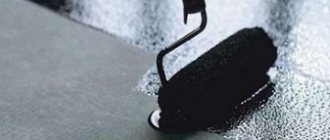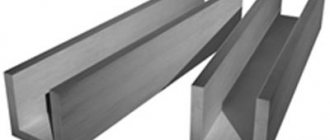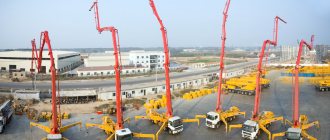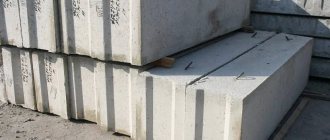Aerated concrete block is an artificial stone with a porous structure. Porevit gas block is a universal building material consisting of environmentally friendly components. The products are manufactured using high-tech German equipment and comply with the regulatory requirements of GOST 31360-2007. The cost of products depends on the size and density of the material.
Features of the material
The blocks are made from a working mixture, which includes a number of components:
- cement;
- sand;
- aluminum powder;
- gypsum;
- lime;
- water.
After thorough mixing, the solution is placed in an autoclave and processed at a pressure of 14 bar. Aluminum powder turns into gas as a result of a chemical reaction. When the material foams, a porous structure is formed.
Important features of Porevit products: white color and environmental safety. Only pure quartz sand is used in production.
What is the difference between “gas blocks”, “foam blocks” and “twin blocks”?
Sometimes consumers confuse the concepts of “gas block”, “foam block”, “twin block”.
In fact, all of this applies to cellular concrete blocks. And blocks made of cellular concrete come in different forms, just like cars or bread. According to the method of pore formation, they are distinguished:
- aerated concrete. In aerated concrete, the pores are through (hence the concept that “aerated concrete breathes”)
- foam concrete blocks.
According to the method of hardening, blocks are divided into:
- autoclave. Autoclaved aerated concrete is an artificially synthesized stone. As a result, autoclaved aerated concrete has a significantly better geometry, it is warmer, stronger, lighter, more convenient to use, and more environmentally friendly.
- non-autoclave. Non-autoclaved aerated concrete, as well as foam concrete, is actually a cement-sand mortar frozen in a porous state.
During autoclave hardening, aerated concrete is placed in metal capsules (autoclaves), where a temperature of 191 degrees Celsius and a pressure of 12 atmospheres are maintained. In an autoclave, changes occur in the structure of aerated concrete at the molecular level and a new mineral with improved performance characteristics is formed - tobermorite.
There is no autoclaved foam block!
For reference:
Equipment for the production of autoclaved aerated concrete costs from 2 billion rubles, and for foam concrete or non-autoclaved aerated concrete - from 100,000 rubles. Here's the whole truth for you.
Watch a video about how cellular concrete blocks are made:
Foam block:
Autoclaved aerated concrete:
Twinblock and Gasblock are the same thing
“Twinblock” is not a separate type of cellular concrete blocks, but a brand name for autoclaved aerated concrete from. Since this brand of aerated concrete has been widely distributed in the Sverdlovsk region for many years, over time the word “Twinblock” has become a household name. Like a Kamaz or a photocopier.
In the Tyumen region, gas blocks are most often called “Porevit”, and in the Novosibirsk region - “Sibit”.
In total, gas blocks are supplied to the Urals from 9 factories: Teplit, Porevit, Porablok, Betolex, Sibit, Varmit, Insi, Aerorate, Betokam.
Specifications
Porevit aerated concrete blocks have a number of advantages over other types of cellular concrete.
- Retains heat well. The external wall, made of D500 stone 40 centimeters thick, does not require additional insulation.
- The technology of precise cutting of blocks allows you to create smooth walls.
- Easily processed with cutting tools.
- To grip the block, a tongue-and-groove system is made.
- Construction time is reduced due to large dimensions.
- Light weight of one block.
- Excellent fire safety.
- Environmental safety is observed during production.
A thin layer of special glue increases the thermal resistance of a construction project by 20-25 percent compared to cement mortar.
Where is the best place to buy Porevit?
It is not difficult to buy a Porevit block, since it is offered not only by manufacturers, but also by numerous intermediaries. It should be remembered, however, that the quality of the products offered does not always correspond to what is declared. You can buy high-quality building material by contacting directly a trusted manufacturer offering quality products, which must be confirmed by certificates. It is better to get acquainted with the range of products and prices in advance by studying the offer at the company’s office or on its official website. Companies that care about their image offer delivery to the address required and offer a flexible system of discounts.
A video will help you get to know the Porevit blocks better:
comments powered by HyperComments
Physical and mechanical properties
The superiority of Porevit gas blocks is confirmed by physical and operational characteristics. The table shows the average values of the main indicators.
| No. | Characteristic | Magnitude | Unit |
| 1 | Thermal conductivity | 0,12 | W/m degree C |
| 2 | Density | 500 | kg/m3 |
| 3 | Frost resistance | from 35 | cycles |
| 4 | Shrinkage after drying | less than 0.5 | 0,5 |
| 5 | Concrete strength class | B 2.5 |
When is the best time to purchase aerated concrete?
Below is a table that reveals the seasonal situation in the autoclaved aerated concrete market. Ideally, pour the foundation in the fall, so that when the weather gets warmer, you can start building.
It is most profitable to purchase a block in the winter (November - January), and deliver it before the start of the construction season. At this time, the roads have not yet been closed and transport is inexpensive. The difference between peak prices (June-July) and the lowest (November-December) is about 10%. With a volume of 60 m3 (house 150 m2), the savings will be approximately 20,000 rubles.
In winter, blocks come with less fighting. Smooth roads, the plant works for quality, transport is cheaper. In the summer, the plant ships the block “off the stove”, the roads are broken, this can lead to a small amount of fighting. In addition, transport tariffs increase in the summer (due to high demand).
If you still decide to import aerated concrete in May-July, we recommend ordering it in advance.
Products
The modern enterprise in the Ural-West Siberian region is equipped with a German automated line. The quality of aerated concrete depends on the supplied raw materials. All products of the plant meet environmental safety requirements. The table shows the brands of produced aerated concrete blocks.
| Brand of aerated block "Porevit" | Concrete class | Thermal conductivity, W/m degrees Celsius | Height, centimeter | Width, centimeter | Length, centimeter | Weight, kilogram | Frost resistance, cycle |
| BP - 200 | B2.5 | Less than 0.12 | 25 | 20 | 62,5 | 20 | F75 |
| BP - 300 | B2.5 | Less than 0.12 | 25 | 30 | 62,5 | 30 | F75 |
| BP - 400 | B2.5 | Less than 0.12 | 25 | 40 | 62,5 | 40 | F75 |
| BP-100 partition | B2.5 | Less than 0.12 | 25 | 10 | 62,5 | 11 | F75 |
| BP-200 increased strength | B3.5 | Less than 0.14 | 25 | 20 | 62,5 | 23 | F100 |
| BP-300 increased strength | B3.5 | Less than 0.14 | 25 | 30 | 62,5 | 35 | F100 |
| BP-400 increased strength | B3.5 | Less than 0.14 | 25 | 40 | 62,5 | 48 | F100 |
| BPU-200 for jumpers | B2.5 | Less than 0.12 | 25 | 20 | 62,5 | 12 | F75 |
| BPU-300 for jumpers | B2.5 | Less than 0.12 | 25 | 30 | 62,5 | 17,82 | F75 |
| BPU-400 for jumpers | B2.5 | Less than 0.12 | 25 | 40 | 62,5 | 28 | F75 |
Applying blocks
Blocks are used in construction practice to build:
- Multi-storey monolithic frame buildings:
- Private low-rise construction.
According to current standards, buildings with load-bearing walls made of blocks up to 5 floors inclusive (but not higher than 20 m), and self-supporting walls of buildings - up to 9 floors inclusive (but not higher than 30 m) can be erected from autoclaved aerated concrete blocks. In the case of erecting walls supported by floors or to fill frames, the number of floors is not standardized.
Why is it beneficial to use Porevit blocks?
When using cellular stone, savings in financial investments and time are achieved due to:
- Small wall thickness - 40 centimeters, for other materials - 700 millimeters.
- Use special glue - layer thickness 0.2-0.3 centimeters. When using cement, the consumption of masonry mortar increases.
- Reducing labor costs. Convenient grooves for gripping the block reduce the time spent on construction.
- Ideally identical blocks, allowing you to build smooth walls.
- Low thermal conductivity reduces heating costs.
- High vapor permeability ensures natural ventilation of the object.
YTONG® – blocks with 80 years of history
The first thing that interested us was the company's experience. The engineers of the company, then not Xella, but Ytong, launched the industrial production of aerated concrete in 1929! In the first year of operation alone, 14,000 cubic meters were produced. m of aerated concrete (gas silicate). This number of blocks would be enough to build 300 country houses - that is, several fairly large cottage villages. The real heyday of Ytong block production occurred in the first post-war decades and the 1960s, during the so-called period of the German economic miracle. In 1952, Ytong blocks were called for use at the government level. In 2008, Ytong gas blocks began to be produced in Russia at a specially built plant in Mozhaisk. Design production capacity – 1,100 cubic meters. m per day. According to company representatives, the plant is the most modern in Russia. Changes have been made to the concrete recipe and the operation of production lines to allow the production of blocks adapted for our climatic conditions (details are not specified).
In terms of plant operating time and production volume, Ytong is approximately in the middle among its competitors.
| Manufacturer | Teplit | INSI | Ytong | Porablock | Revit |
| Launch of production in Russia | 2005 | 2008 | 2008 | 2012 | 2009 |
| Design capacity, cubic meters m/year | 500 | 420 | 400 | 345 | 300 |
All of the listed manufacturers produce gas blocks using German equipment. Thus, in the public history of the YTONG brand, we did not find anything that could justify the higher cost of YTONG blocks. Perhaps it's all about consumer characteristics.
Single-layer external walls
Aerated concrete blocks of the BP-400 brand are used in the construction of low-rise buildings. External walls are laid in one row. When constructing monolithic frame buildings, they are used as wall filling. Artificial stone has the following technical characteristics:
- Block size: length - 625 millimeters, width - 400 millimeters, height - 250 millimeters.
- The weight of one block is 40.82 kilograms.
- Density – D500.
- Frost resistance – F50 cycles.
- Concrete class 5.
- Drying shrinkage is ?0.5.
- Thermal conductivity in a dry state is ? 0.12.
The thermal conductivity of load-bearing walls depends on the thickness and material.
By choosing aerated concrete of this brand as a building material, builders will save time and money on building external walls. Additionally, there is no need to insulate the object. It is easy to carry out interior finishing of the building.
Using the BP-400 gas block, the owner will receive: smooth walls, natural ventilation, and durability of the structure.
Pros and cons of Porevit
The popularity of Porevit blocks from Yalutogorsk is based on its unique technical characteristics and the affordable price of the material. Thanks to the use of unique autoclave technology, the manufacturer offers high-quality products that have a number of advantages.
- low thermal conductivity, which can significantly reduce heat loss, which affects the family budget;
- high strength, and remember that the products are processed under high pressure;
- the porous structure allows the walls to breathe, which creates an ideal microclimate in the room and eliminates rot and mold;
- increased fire resistance;
- high frost resistance, which is especially important for cities such as Tyumen and Yekaterinburg, whose climate cannot be called mild;
- ease and simplicity of installation, where the absence of the need to use expensive lifting equipment is especially appreciated.
Unlike other building materials, the Porevit series foam block is easy to process, and experts say that even wood-based materials cannot be processed so easily. This porous material is easy to cut, so there are no difficulties during installation. In addition, the blocks are the same size, they are perfectly even.
House from Porevit: building quickly and easily
Double-layer external walls
The aerated concrete block of the BP-300 brand has the following technical characteristics:
- Block size: length - 625 millimeters, width - 300 millimeters, height - 250 millimeters.
- The weight of one block is 30.6 kilograms.
- Density – D500.
- Strength – 35 kg/cm2.
- Frost resistance – F50 cycles.
- Concrete class 5.
- Drying shrinkage is ?0.5.
- Thermal conductivity in a dry state is ? 0.12.
Artificial stone is used for the construction of load-bearing walls in buildings up to three floors. The laying is done in several rows. And also as filling walls in multi-story construction.
The advantage of using the material: low cost of wall construction, minimal amount of insulation, flat surface.
Maybe it's all about the environment?
Last but not least, the parameter of YTONG blocks is environmental safety. YTONG blocks are awarded the Ecomaterial Absolute certificate, confirming that the products have passed voluntary certification. From the explanations of the organization that issued the certificate, it follows that “the product meets the standards, the release of harmful substances and toxicity is at least 40% below the maximum permissible concentration, and the production of products uses advanced technologies and equipment that minimizes the impact on the environment,” i.e. . The certificate is partly issued in recognition of the environmental safety of the product, and partly for the safety of the production processes through which the product was produced.
Among the blocks we are considering, only YTONG and Porevit products have an Ecomaterial project certificate. Porevit blocks are assigned the rating value Ecomaterial Green (the material is safe for humans and the environment), which is lower than Ecomaterial Absolute (environmentally friendly material). Teplit blocks have a certificate of conformity of manufactured materials and products to the category of environmentally friendly “green” building materials from the Union of Construction Industry Enterprises of the Sverdlovsk Region.
Since each certification company is guided by its own standards and criteria, for a more adequate comparison of the blocks under consideration, we will compare them in terms of the specific effective activity of natural radionuclides (NER) or natural radiation. Since the level of natural radiation can negatively affect human health, sanitary and epidemiological surveillance services very carefully determine it for all construction products entering the market.
| Norm | YTONG | INSI | Teplit | Porablock | Revit |
| NRN activity indicator, Bq/kg | 370 | 199,3 | 106 | 77,5 | 39,77 |
s/n – corresponds to the norm, the exact value is not indicated.
In the battle for the environment, YTONG blocks have perhaps the worst indicators in terms of natural radiation. However, they are still much safer than the standards require, and therefore can be used to build walls even in children's institutions.
Where to buy aerated concrete: at the factory or from a dealer?
At first glance, it seems that it is more logical to buy a gas block from a factory. But with a more careful approach, you can see that this is not the case.
We have prepared for you a comparison table based on customer opinions and our experience.
Dealers/trading companies purchase from factories in large quantities and have discounts. And also more customer-oriented.
Factories from other regions give large discounts to their dealers so that they can supply units to our region and “pass” on the price. For example, the Sibit block costs 4,750 rubles/m3 in Novosibirsk. While in the Sverdlovsk region they already cost 3,050 rubles with free delivery. (data as of November 2016)
We are not saying that it is not worth buying from the factory. We are talking about the fact that you can buy from a dealer/trading company easier, cheaper and with a guarantee against chips and damage.
If you need to purchase several pallets of blocks, we recommend purchasing them at the nearest construction market or asking your neighbors. In this case, you will save significantly on delivery.

